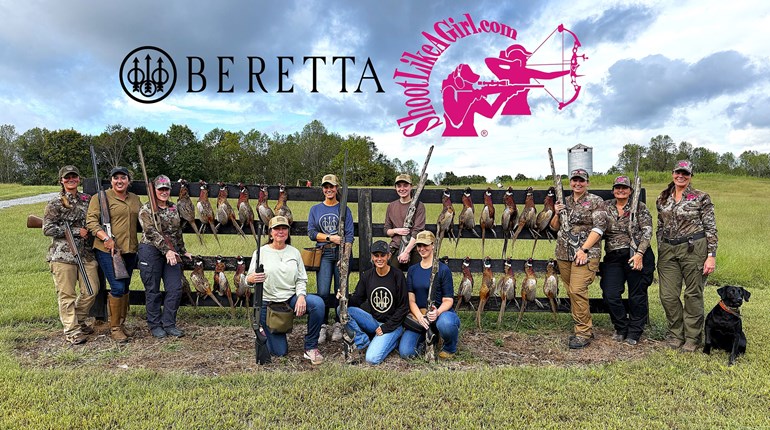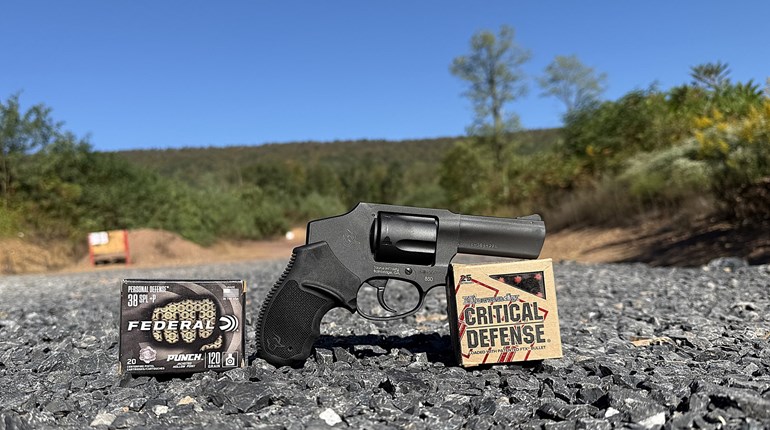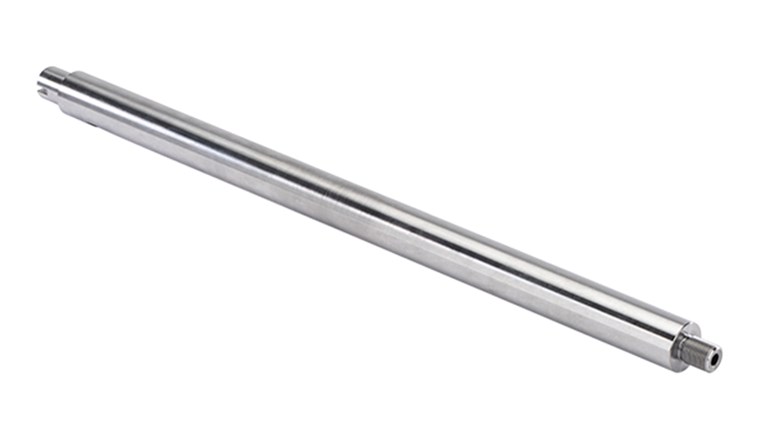
Shotguns are justly famous for their versatility, and they owe a large part of their adaptability to the variety of shotgun ammunition available. The three most common types available in today’s market are birdshot, buckshot and slugs. Each type serves a distinct purpose, tailored to specific hunting, defensive and sporting needs. While each of the three types have its own distinct differences, there are a few similarities that they all share.
First, all three types are available in a variety of lengths, with the most common being 2¾" and 3", although mini shells have become popular over the past couple of years, as they allow increased round count for those guns capable of firing such a variant. Another similarity, except for the type of projectile that leaves the muzzle, is the parts that construct each shell. Pictured above is a cutaway of each type, with birdshot on the left, followed by buckshot and slugs.
Most modern-day shotshells have a plastic exterior, with the brass head at one end encasing the primer, and the opposite end neatly crimped to contain what lies within. Starting from the bottom of the shell, near the primer internally, lies the gunpowder, waiting to be ignited once the primer is struck. Sitting just above the gunpowder is a plastic wad, which separates the gunpowder and shot, seemingly cupping it within the hull. As the shot is fired, the wad is expelled out the muzzle end of the gun, along with whichever projectile was housed inside.
This is where most of the similarities end--what is contained inside each shotshell dictates its use, safety measures and much more.
Birdshot 
Birdshot is among the most common varieties of shotgun ammunition you will typically find at your local gun shop. Tailored for hunting small game such as rabbit, squirrels, waterfowl and more, this type of shell is excellent at striking a harmonious balance between effectively taking game while minimizing damage to the meat. Aside from hunting, birdshot is the ammo of choice used by scattergun enthusiasts of all ages in the timeless competitions of trap and skeet as well as sporting clays.
If you were to remove the crimp from the end of a birdshot load, you would find a hefty amount of shot within. Birdshot are small pellets made from a variety of materials, including lead, steel, bismuth and more. When it comes to the size of the pellets, the rule of thumb is this: the larger the shot number, the smaller the shot. For example, #8 shot is smaller than #4 shot and vice versa. Using that example, the most common birdshot options used by hunters and clay shooters alike range between #4 through #8, with additional options available on both ends of the spectrum. One last note regarding birdshot is that it is the only option of the three types of ammunition discussed that can be safely shot in the air (as in duck hunting) due to its decreased range, which results (in part) from its small size.
Buckshot
 Stepping up in size from birdshot is what has become one of the most popular options for home defense. While appearing identical to birdshot externally, inside the two are quite different from one another. There are fewer lead pellets internally, but they're much larger. What may confuse many folks new to the world of shotguns even further is how there are shot sizes of 00 and 000, which are even larger in size than #1 shot.
Stepping up in size from birdshot is what has become one of the most popular options for home defense. While appearing identical to birdshot externally, inside the two are quite different from one another. There are fewer lead pellets internally, but they're much larger. What may confuse many folks new to the world of shotguns even further is how there are shot sizes of 00 and 000, which are even larger in size than #1 shot.
This increase in shot size means an increase in stopping power, which is why the use of buckshot is most often seen in home defense shotguns or even certain hunting scenarios, although the latter has become less popular over the years. Most hunters prefer slugs for medium to large game when hunting with shotguns. Due to its larger size, buckshot has a much further trajectory than birdshot, and thusly is not safe to shoot in the air like one would when hunting dove or shooting clays. Another safety consideration with buckshot for home defense is that it can "overpenetrate," or pass through internal walls ... so it's critical to be aware of what is on the other side of a door or wall, for example, should the firearm be discharged inside the home.
Slugs 
Last but not least are slugs, the ammunition of choice for those bringing their shotguns into the woods for large game such as deer, bear and even wild boar. Unlike birdshot and buckshot, slugs contain one single projectile capable of taking down large game within its path while offering a clean and ethical kill for hunters who can land a well-placed shot. Since this option is comprised of one solid, heavy projectile, it has a much further effective range than its counterparts, roughly 75-100 yards (with some options capable of reaching out close to 200 yards). Compare this to shots placed with birdshot, for example, at ranges typically 40 yards and under in most cases.
Offered in varying weights, there are two main types of slugs to look out for: rifled and sabot. Rifled slugs are designed for shotguns with smoothbore barrels, while sabot slugs are designed for shotguns with rifled barrels. There's a touch of controversy over which is the better option for hunting deer, but a safe rule of thumb if you are ever unsure is this: For distances around 75 yards or closer, rifled slugs will be fully capable of getting the job done. If you believe you may have a shot at a deer 100 yards or more away, then sabot slugs may be the way to go as they offer increased accuracy at an extended range.
Understanding the nuances of birdshot, buckshot and slugs is crucial for making informed decisions in hunting, sporting and defensive scenarios. Each type offers distinct advantages, tailored to specific targets and distances. Whether you are pursuing game both small and large, defending your home or bursting clay pigeons mid-air, selecting the appropriate shotgun shell is paramount for success and safety.







































